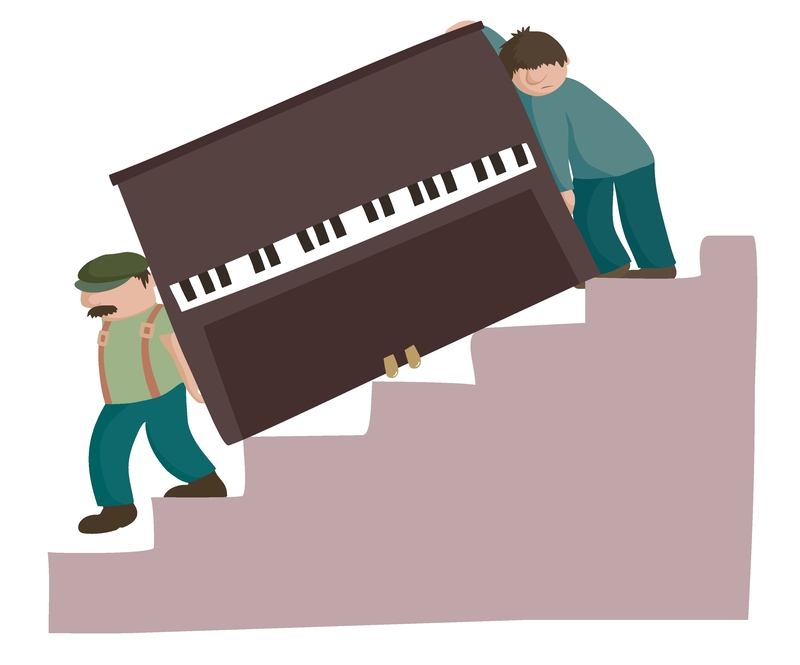Essential Steps for Packing Like a Pro When Moving
Moving can be both an exciting and challenging experience. Whether you're relocating across town or preparing for a long-distance move, packing efficiently for your move is the foundation of a smooth transition. If you want to know how to pack professionally and ensure that your belongings reach your new home safely and systematically, you're in the right place. In this guide, we'll reveal the essential steps for packing like a pro when moving, highlighting tips, tricks, and strategies that make all the difference.

Why Packing Like a Pro Matters
Successful relocations depend heavily on how you prepare and pack. Professional-quality packing helps you:
- Minimize risk of damage to your possessions
- Save time and effort during loading, transport, and unpacking
- Move in an organized, stress-free manner
- Reduce costs linked to lost or broken items
If you want your move to go as planned, follow these pro packing steps to give yourself peace of mind and a good head start in your new space.
Step 1: Develop a Moving and Packing Plan
Create a Detailed Timeline
Begin your packing process by planning ahead. The earlier you start, the better. Use a calendar to map out milestones and set deadlines for each room. Ideally, you should start preparing at least 4-6 weeks before your moving date.
Inventory Your Belongings
Take stock of everything you own. Making an inventory list not only helps you determine what needs to be packed, but also makes unpacking and locating items much easier after the move. This inventory serves as a reference for both packing and organizing for your move.
Step 2: Sort and Declutter Your Possessions
Eliminate Unnecessary Items
Don't move what you don't need. Packing for a move like a professional always starts with decluttering. Be honest about what you truly need, use, or value. Consider donating, selling, recycling, or disposing of anything you haven't used in the past year.
- Donate clothes, books, and household items in good condition
- Sell valuable or big-ticket items on online marketplaces or at a garage sale
- Recycle old electronics and papers responsibly
- Throw away anything broken or unusable
By decluttering, you'll reduce moving costs, lighten your load, and simplify your packing process significantly.
Step 3: Gather High-Quality Packing Supplies
Standard & Specialty Packing Materials
When packing like a pro, quality supplies matter as much as careful organization. Gather the following moving materials:
- Sturdy moving boxes (various sizes)
- Packing paper and bubble wrap for cushioning
- Stretch wrap and packing tape
- Permanent markers and labels
- Scissors and box cutters
- Furniture pads and moving blankets
- Specialty boxes for dishes, wardrobe items, TVs, and artwork
- Resealable plastic bags for bolts, screws, and small parts
Investing in proper, high-quality packing materials will help protect your belongings and make both the packing and unpacking processes much easier.
Step 4: Master the Art of Smart Packing
Room-by-Room Packing
Always pack one room at a time for better organization and quicker unpacking. Label each box with the room name and a brief description of its contents to save time later.
Pack Strategically
- Heaviest items on the bottom: Place books, tools, or heavier items on the bottom and lighter, more fragile belongings on top.
- Fill empty spaces: Use towels, linens, or packing paper to fill gaps and prevent items from shifting inside boxes.
- Keep essentials separate: Prepare a special "first-night box" with items you'll need immediately, like toiletries, clothes, medications, and chargers.
Protect Fragile Items
When packing for a move, give extra attention to anything delicate:
- Wrap each fragile item in bubble wrap or packing paper.
- Use divided boxes for glasses and dishes.
- Pillow fragile items with soft textiles or foam.
- Label boxes "FRAGILE" and "THIS SIDE UP" clearly.
Disassemble Large or Bulky Items
Take apart furniture, beds, and large appliances where possible. Keep screws and hardware in labeled plastic bags taped to the main item. This step not only prevents damage but also makes transporting bulky pieces easier.
Handle Valuables and Documents Carefully
Pack important documents, jewelry, heirlooms, and other valuable belongings in a special bag or box that you keep with you during the move. Never load these with the rest of your household goods.
Step 5: Label Everything Clearly
Use a Consistent Labeling System
- Room designation (e.g., kitchen, master bedroom, bathroom)
- Box number for easy tracking if you have a master inventory
- Contents summary ("Winter clothes & shoes" or "Pots & pans")
- Indicate if the box is fragile, heavy, or needs to be unpacked first
For extra efficiency, color code boxes by room or use colored tape. This will make unloading and distributing boxes in your new space much quicker and more accurate.
Maintain a Packing List or Inventory
Keep a digital or written record of what's in each box. Not only will this help you if something goes missing, but it will also make unpacking and organizing your new home easier.
Step 6: Prepare Special Items for the Move
Moving Artwork, Electronics, and Appliances
- Flat-screen TVs and computers: Use the original boxes, if you still have them, or buy specialty TV and monitor boxes.
- Large appliances: Clean, disconnect, and dry them thoroughly in advance. Secure cords and pack loose components.
- Artwork and mirrors: Use mirror boxes and plenty of bubble wrap. Move these upright for protection.
- Musical instruments: Pack in original cases and add cushioning. For pianos, consider a professional mover.
Handling Plants and Pets
Transport plants in sturdy containers with air holes. Keep pets' essentials--food, leashes, bedding, and records--in a readily-accessible bag.
Step 7: Finish Strong with a Last-Minute Checklist
Final Pack and Prep
- Double-check all drawers, closets, and cabinets
- Confirm all boxes are labeled and sealed
- Ensure breakables and valuables are protected
- Prepare snacks, drinks, and first-aid for moving day
- Keep your essentials box close at hand
Bonus Pro Packing Tips for an Efficient Move
- Don't overpack boxes: Remember, large boxes are best for light items, while small boxes handle heavy goods.
- Bundle cords and cables using twist ties or zip ties and label each for easy setup.
- Take photos of electronic setups before disassembly so you can reconnect everything at your new home effortlessly.
- Use suitcases, laundry baskets, and totes to maximize available storage and reduce the need for extra boxes.
- Enlist friends or professional movers for added support.
- Stay hydrated and take regular breaks during packing to avoid exhaustion.
Common Mistakes to Avoid When Packing for a Move
- Procrastination: Leaving packing until the last minute results in rushed jobs and forgotten items.
- Reusing weak boxes: Old boxes can collapse and damage your belongings.
- Skipping labels: Unlabeled boxes create confusion when unpacking and may result in mishandling.
- Mixing items from different rooms: This complicates sorting and unpacking at your destination.
- Neglecting to protect fragile items: Always cushion and reinforce breakables.
- Overloading boxes: Heavy boxes are difficult (and dangerous) to move and may burst open.
Final Thoughts: Achieve a Smooth Move with These Packing Steps
Packing like a professional is the key to a successful and organized move. By following these essential steps for packing like a pro when relocating, you not only safeguard your valuables but also save time, money, and future hassle. A thorough plan, quality packing supplies, smart labeling, and proper technique are your best tools for a seamless move.
Remember, every move is unique, but preparation, diligence, and a little professional wisdom go a long way. Whether you're moving solo or hiring movers, these essential packing steps will set you up for a stress-free moving experience and a warm welcome into your new home.

Frequently Asked Questions About Pro Packing When Moving
1. How early should I start packing before moving?
It's best to begin packing at least 4-6 weeks before your move. Start with infrequently used items and proceed room by room to stay organized.
2. What's the best method for packing fragile items?
Wrap each item individually in bubble wrap or packing paper. Pack them in small or medium-sized boxes, cushion well, and label as "Fragile."
3. Should I hire professional packers?
If time or physical ability is a concern, or if you have specialty items (like pianos or antiques), hiring pro packers could be a great investment for a stress-free move.
4. What should I pack in my essentials or "first night" box?
Include toiletries, medications, bedding, basic kitchenware, chargers, a change of clothes, and important documents. This box should be loaded last and unloaded first.
Begin Your Move Right: Pack Like a Pro from Day One
Armed with these expert packing steps for moving, you can make your relocation as effortless and efficient as possible. Stay focused, pack systematically, and look forward to a hassle-free arrival at your new destination!



